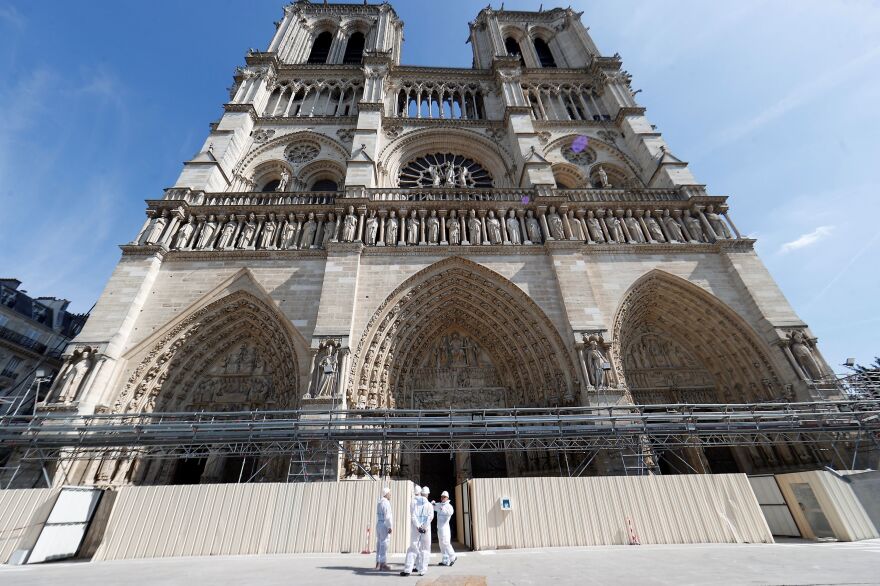Archaeologists say they will soon open a human shaped lead sarcophagus found underneath the floor at the Notre Dame Cathedral in Paris.
The announcement came around the three-year anniversary of a devastating fire that engulfed the more than 850-year-old national monument and shocked the world.
The day after the blaze, archaeologists were called in to assist with the conservation and restoration of the cathedral as workers set to the task of rebuilding.
"The vaults crashed here during the fire and opened a hole into this 19th century heating network and underneath there is a series of layers which is very dense, interesting and fascinating," said French National Archaeological Institute archaeologist Christophe Besnier.
Archaeologists were permitted to excavate a small area of the exposed flooring in preparation for scaffolding that needed to be constructed in order to restore the church's large spire, which collapsed during the blaze.
During the preparatory excavation, archaeologists discovered a number of historical artifacts including painted sculptures, tombs and sections of the lost rood screen which was a sort-of fence that was constructed in 1230 to separate the choir from the congregation.
The rood screen was demolished during the time of Louis XIV, but 19th century excavations performed by Eugène Viollet-le-Duc led to the discovery of sections of the ornate wall. Those sections are currently kept at the Louvre.
Among the tombs recently discovered was a human-shaped lead sarcophagus that archaeologists believe may date to the 14th century, but they won't know for sure until it is opened.
"We were able to send a small camera inside which showed cloth remains, organic matter such as hair and plant remains," Besnier said.

He says the plant material indicates that the contents of the sarcophagus have been well preserved and could be from a boxwood tree, which was used to preserve the bodies of the social elite.
France's National Institute of Preventive Archaeological Research says it will attempt to identify and date the remains, believing them to be of an important individual.
Burials in churches and cathedrals were generally reserved for elites or members of the clergy, with a location nearest the choir being the most desirable.
Although other sections of the lost rood screen were also discovered, archaeologists were unable to unearth them due to a constrained timeline that has been hampered by the COVID-19 pandemic as well as concern about lead which spewed from the fire, spreading toxic dust throughout parts of central Paris.
French President Emmanuel Macron has pledged to complete reconstruction by April 15, 2024, the fifth anniversary of the blaze and months before Paris is set to host the Summer Olympics.
"Notre Dame is our history, our literature, part of our psyche, the place of all our great events, our epidemics, our wars, our liberations, the epicenter of our lives," Macron told reporters the morning after the blaze. "We will rebuild it together."
Copyright 2022 NPR. To see more, visit https://www.npr.org.



